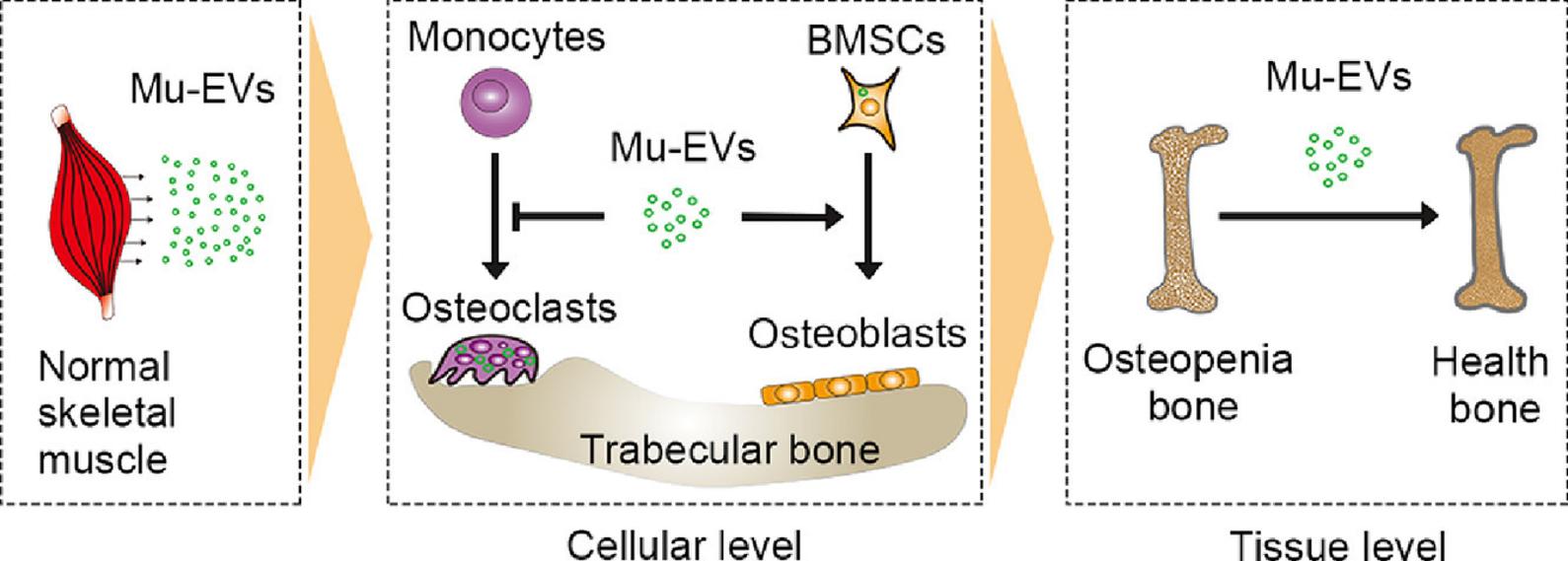Brain-Adipose Exosome Communication Research Introduction
Exosomes are featured with biological functions involved in muscle-bone inter-tissue information transfer, which can be combined with tissue single-cell transcriptome to resolve tissue microenvironment, map the regulatory network involved in tissue exosomes, and deeply investigate the mechanism of exosome action. Creative Biolabs, as a professional team for exosome research, carefully provides high-quality tissue exosome omics analysis services to help understand exosomes mediating muscle-bone communication.
Exosomes Mediate Muscle-Bone Inter-tissue Communication
Muscle and bone are often synchronized and closely linked to diseases such as osteoporosis and sarcopenia. Positive feedback circuit communication mechanisms have been found to exist between adjacent muscles and bones in order to regulate each other by secreting regulatory factors including exosomes, with intercellular signaling involving the cellular level. For example, exogenous exosomes from skeletal muscle were found to alleviate osteoporosis by dynamic bone assessment and histological assays in mouse models of osteoporosis. This was achieved primarily by promoting osteogenic differentiation of bone marrow mesenchymal stem cells and inhibiting osteoclast formation from monocytes to achieve a balance in bone reconstruction. In contrast, the induction of new bone formation by exosomes secreted from atrophic skeletal muscle tissue is diminished, while the osteoclastic effect is enhanced. Furthermore, myogenic cell-derived exosomes in muscle tissue were shown to mediate the interaction of muscle and bone tissue osteoblasts. This perspective of tissue exosomes to resolve the role of exosomes involved in muscle-bone tissue communication and their molecular mechanisms is more scientific and novel. Also, the combination of humoral exosomes fuels exosome traceability analysis, which is beneficial to improve the credibility of exosome marker studies in muscle and bone-related diseases.
Mechanisms of Muscle-Bone Exosome Communication
Exosomes have a concentrated effect on cargoes such as RNA and proteins, delivering exosomal functional components with multi-target-regulatory effects. Exploring the mechanisms by which tissue exosomes mediate muscle-bone tissue intercommunication provides a new basis for the study of tissue engineering and the treatment of related diseases. A series of approaches include the identification of extracted tissue exosomes in terms of both morphology and molecular biology, followed by the exploration of key exosome cargoes for delivery between muscle and bone tissues in induction models, which are often screened using a combination of high-throughput sequencing and multi-omics analysis. For example, it was explored that exosome-mediated miR-27a-3p directly regulates the APC/β-catenin signaling pathway, explaining the muscle-bone interregulation.
 Fig.1 Muscle exosomes improve osteoporosis. (Huang, 2023)
Fig.1 Muscle exosomes improve osteoporosis. (Huang, 2023)
Creative Biolabs provides tissue exosome research services involving methodology, refinement studies, and components profiling. Multi-omics analysis and interpretation of the tissue exosome action mechanisms are the main focus, especially the vital tissue microenvironment and remote regulation. Please contact us to discuss your project.
Reference
-
Huang, H.; et al. Muscle-derived extracellular vesicles improve disuse-induced osteoporosis by rebalancing bone formation and bone resorption. Acta Biomater. 2023, 157: 609-624.
For Research Use Only. Cannot be used by patients.
Related Services:

 Fig.1 Muscle exosomes improve osteoporosis. (Huang, 2023)
Fig.1 Muscle exosomes improve osteoporosis. (Huang, 2023)









